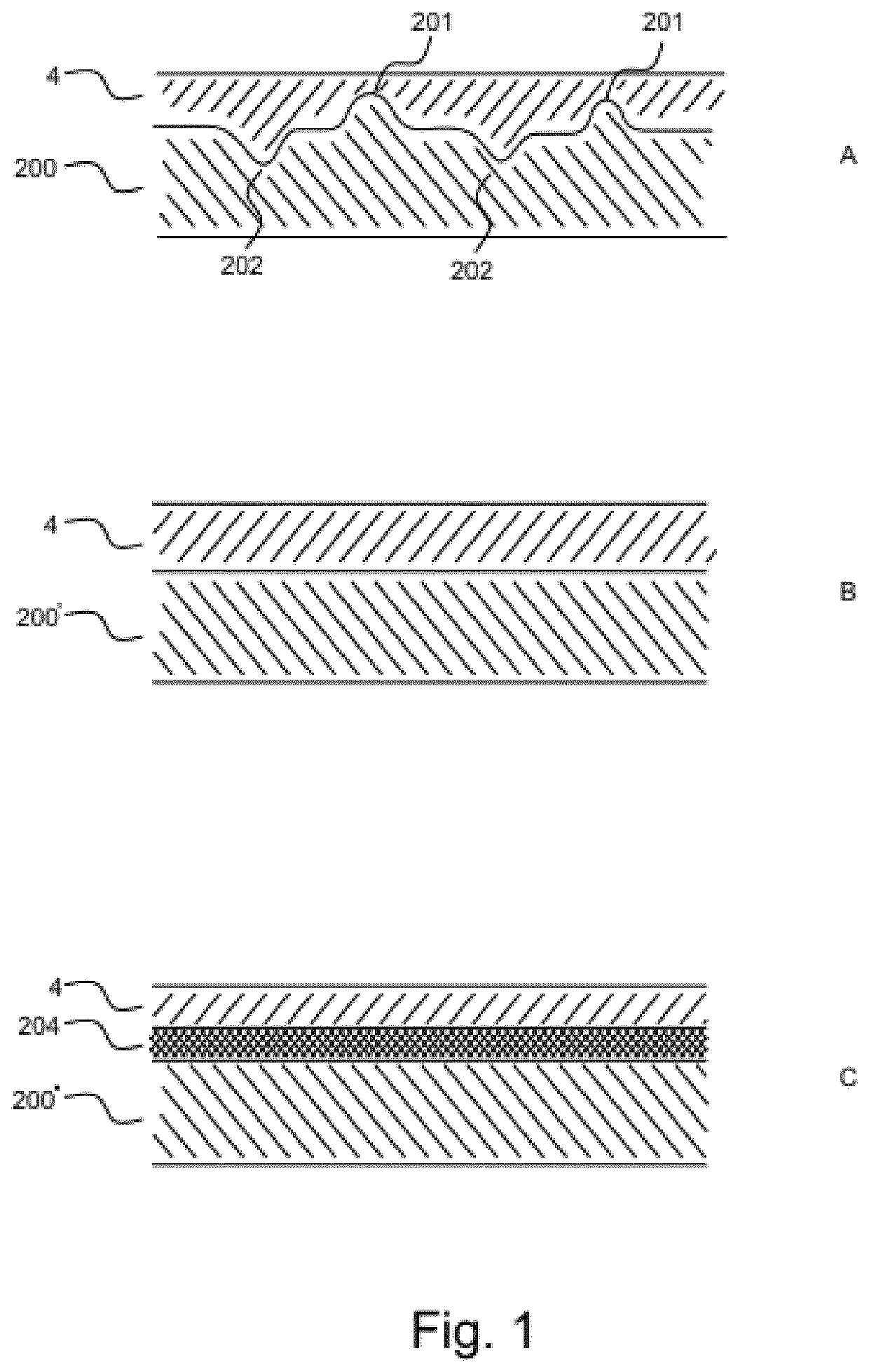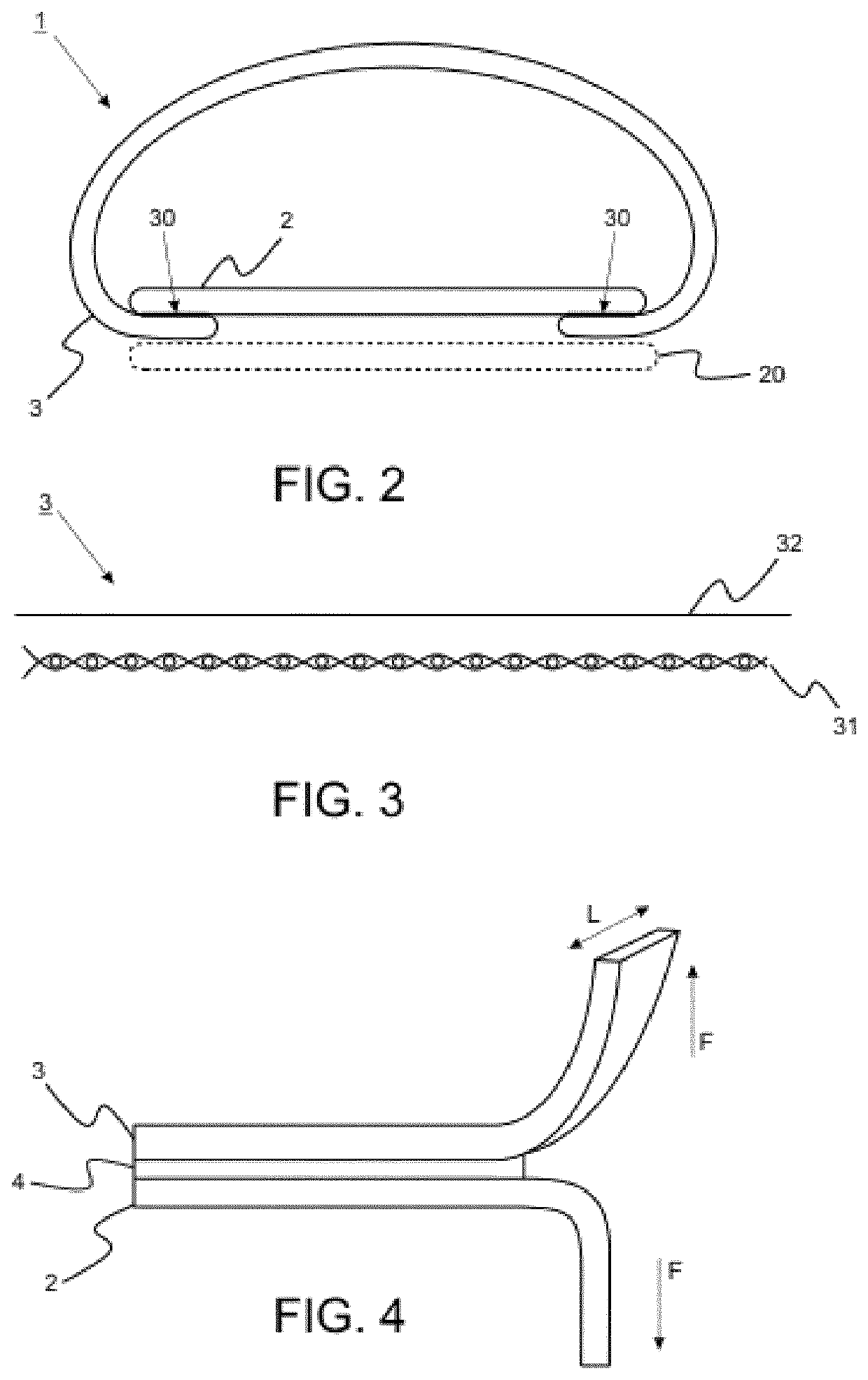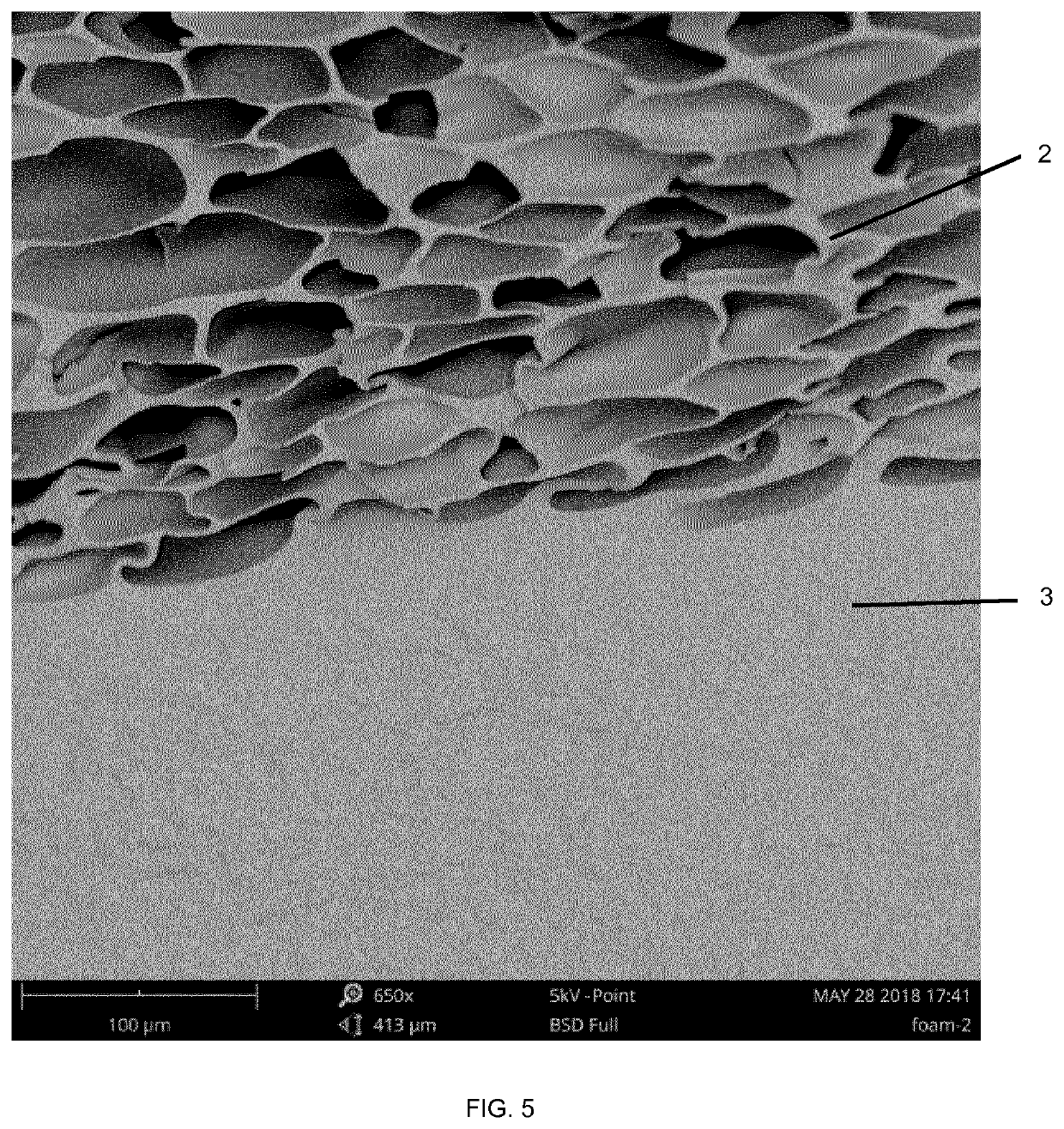Shoe comprising a sole of a thermoplastic material and a method for use in manufacturing such a shoe
a thermoplastic material and sole technology, applied in the field of shoes, can solve the problems of long processing time, more complex, solvent-based adhesives are relatively expensive, etc., and achieve the effect of reducing the disadvantages of prior ar
- Summary
- Abstract
- Description
- Claims
- Application Information
AI Technical Summary
Benefits of technology
Problems solved by technology
Method used
Image
Examples
example 1
[0073]Example 1 describes the connection of a thermoplastic body using a hot melt adhesive. In order to assess whether a hot melt adhesive could be used to adhere a first body to a thermoplastic body, two thermoplastic bodies were chosen, in this case foamed thermoplastic bodies as described in connection with FIG. 2. The melting temperature TM of these bodies is 160° C. (determined with ASTM D3418-03 as described in this patent application). In a first attempt, a polyester hot melt adhesive having a melting enthalpy of 27±3 J / g was used (the determination of which is based on ASTM standard D3418 using a Mettler STARe differential scanning calorimeter), showing a first order transition temperature (solid to liquid) around 110° C. The hot melt was heated to a temperature of 180° C., thus well above its melting temperature and at a level that is common for using this hot melt to obtain strong connections. The thermoplastic bodies were preheated to various temperatures, ranging from 80...
PUM
| Property | Measurement | Unit |
|---|---|---|
| melting enthalpy | aaaaa | aaaaa |
| melting enthalpy | aaaaa | aaaaa |
| thickness | aaaaa | aaaaa |
Abstract
Description
Claims
Application Information
 Login to View More
Login to View More - R&D
- Intellectual Property
- Life Sciences
- Materials
- Tech Scout
- Unparalleled Data Quality
- Higher Quality Content
- 60% Fewer Hallucinations
Browse by: Latest US Patents, China's latest patents, Technical Efficacy Thesaurus, Application Domain, Technology Topic, Popular Technical Reports.
© 2025 PatSnap. All rights reserved.Legal|Privacy policy|Modern Slavery Act Transparency Statement|Sitemap|About US| Contact US: help@patsnap.com



